As telehealth revolutionizes health care delivery for patients worldwide, one area that holds promise is the diagnosis and treatment of autism spectrum disorder (ASD). In this blog, we will explore the many advantages of telehealth for individuals with autism and their families. Additionally, we will delve into how telehealth can improve patient access to care, enhance treatment outcomes, and ultimately enhance quality of life.
Autism Spectrum Disorder: An Overview
Autism spectrum disorder is a complex neurodevelopmental condition characterized by challenges with social interaction, communication, and repetitive or restricted behaviors. The severity of symptoms and the level of impairment can vary widely, making early diagnosis and individualized treatment plans crucial for optimal outcomes.
Traditionally, ASD diagnosis and treatment relied on in-person evaluations and interventions. However, telehealth has emerged as a game-changing tool, offering new opportunities to overcome barriers to access and improve the lives of those with autism.
10 Benefits of Telehealth for Autism Diagnosis and Treatment
1. Improved Access to Care
One of the most significant advantages of telehealth is its potential to improve access to health care services, particularly for individuals and families living in rural or underserved areas. Telehealth can connect families with ASD specialists, eliminating lengthy commutes and reducing the burden of transportation costs. Better access enables more timely and accurate autism diagnoses, which can significantly influence the effectiveness of early intervention strategies.
2. Cost-Effectiveness
Telehealth can be a more cost-effective option for both patients and health care providers. Virtual consultations can lower overhead costs for providers, with savings that may be passed on to patients. Additionally, families can reduce or eliminate expenses related to transportation, childcare, and lost wages due to time off from work for medical appointments.
3. Enhanced Continuity of Care
Effective management of ASD often requires a multidisciplinary approach involving a team that may include pediatricians, psychologists, speech and language therapists, and occupational therapists. Telehealth facilitates seamless communication and collaboration among these providers, ensuring a comprehensive and coordinated care plan for each patient. Furthermore, it allows health care professionals to monitor progress more closely and adjust treatment plans as needed.
4. Increased Parental Involvement and Support
Telehealth offers unique opportunities for increased parental involvement in the diagnostic and treatment process. Virtual appointments make it easier for both parents to participate, fostering a better understanding of their child’s needs and promoting a more collaborative approach to care. Additionally, telehealth can provide parents with access to support services such as counseling, educational resources, and online support groups to help navigate the challenges of raising a child with autism.
5. Reduced Stress and Anxiety
Individuals with autism often struggle with sensory sensitivities, anxiety, and difficulty adjusting to new environments, which can make traditional in-person appointments challenging. Telehealth allows patients to receive care in the comfort and familiar surroundings of their own homes, reducing stress and anxiety associated with clinical visits. This more relaxed setting can lead to improved patient engagement and more accurate assessments, as health care providers can observe the individual in their natural environment.
6. Expanded Treatment Options
Telehealth enables health care providers to offer a broader range of treatment options for individuals with autism, including remote delivery of evidence-based interventions such as applied behavior analysis (ABA), social skills training, and cognitive-behavioral therapy (CBT). Virtual sessions can be tailored to the specific needs of each patient for effective and personalized care.
7. Rapid Response to Emerging Needs
Telehealth can facilitate a more rapid response to emerging needs or crises, such as escalating behavioral issues or mental health concerns. With the ability to quickly connect with health care providers, families can receive real-time guidance and support to prevent potential exacerbation of symptoms or situations. This immediate access to care can be invaluable in promoting stability and well-being for individuals with autism and their families.
8. Long-Term Monitoring and Follow-Up
Autism is a lifelong condition; ongoing monitoring and follow-up are essential to ensure continued progress and adapt treatment plans as the individual matures and their needs evolve. Telehealth makes long-term care convenient and accessible, facilitating regular check-ins with health care providers without the need for frequent in-person visits. This ease of access can contribute to better adherence to treatment plans and improved outcomes.
9. Access to Specialized Expertise
In many cases, individuals with autism benefit from consultations with specialists that have expertise in specific therapies or co-occurring conditions. Telehealth opens the door to connect with these providers regardless of geographic location, ensuring that each patient receives the most advanced and appropriate care to meet their unique needs.
10. Promoting Research and Innovation
Widespread adoption of telehealth for autism diagnosis and treatment offers a wealth of opportunities for research and innovation. Data collected through virtual assessments and interventions can be used to refine diagnostic criteria, develop new treatments, and evaluate the effectiveness of interventions. Furthermore, telehealth platforms can enable researchers to collaborate and share their findings more easily, fostering a global community of experts dedicated to advancing the understanding and treatment of autism.
Conclusion
Telehealth has the potential to transform the way we approach the diagnosis and treatment of autism spectrum disorder. By breaking down barriers to access, promoting cost-effectiveness, and enhancing the quality of care, telehealth can significantly improve the lives of individuals with autism, learning disabilities, and beyond.
One great example of how telehealth can improve the lives of those with learning disabilities can be seen in CTRC’s video series, “Toby’s Story.” Toby, a high school student with Down Syndrome, benefited greatly from telehealth. To learn more, watch the following videos on CTRC’s YouTube channel: Telehealth Success in a School-Based Setting, Telehealth Success with Speech Therapy, Telehealth Success ABA Services, and Telehealth Success: Family Perspective.
As telehealth becomes more widely accepted as an essential tool for diagnosing, caring for, and managing autism, we are taking crucial steps towards a more inclusive, efficient, and effective health care system. Telehealth will undoubtedly play a central role in ASD research and innovation, improving understanding of unique needs, driving progress, and fostering better outcomes for individuals and families impacted by this complex neurodevelopmental disorder. To learn more about CBT for adults, check out this provider training from Stanford Medicine.
If you have any questions about telehealth in the state of California, contact our team at CalTRC@OCHIN.org or fill out the contact form on our website.








Leave a Comment